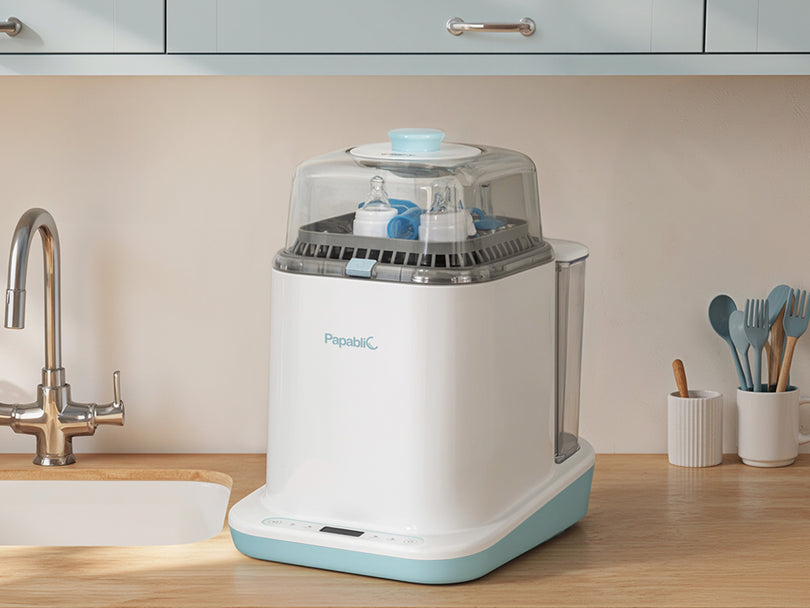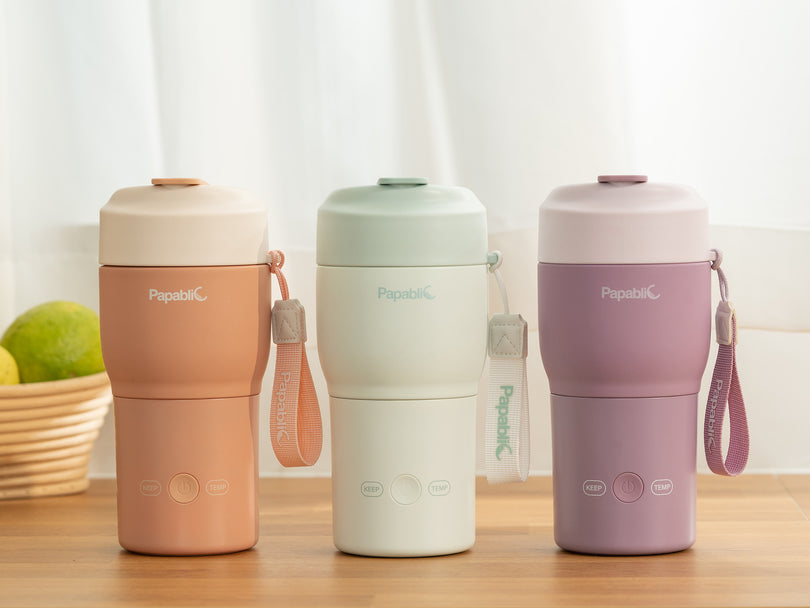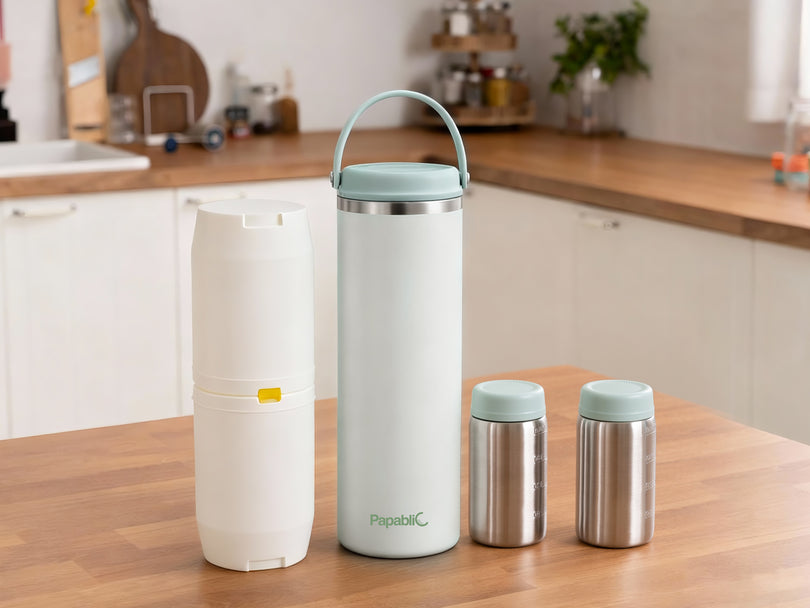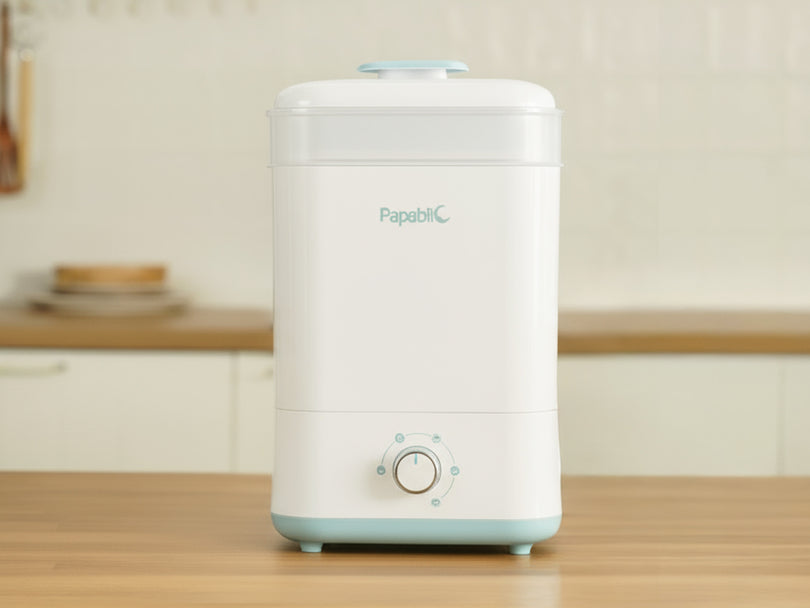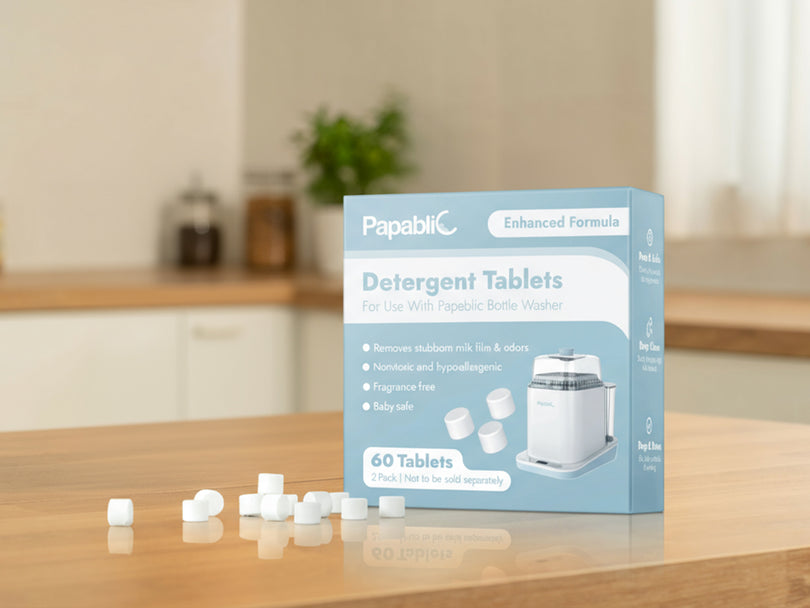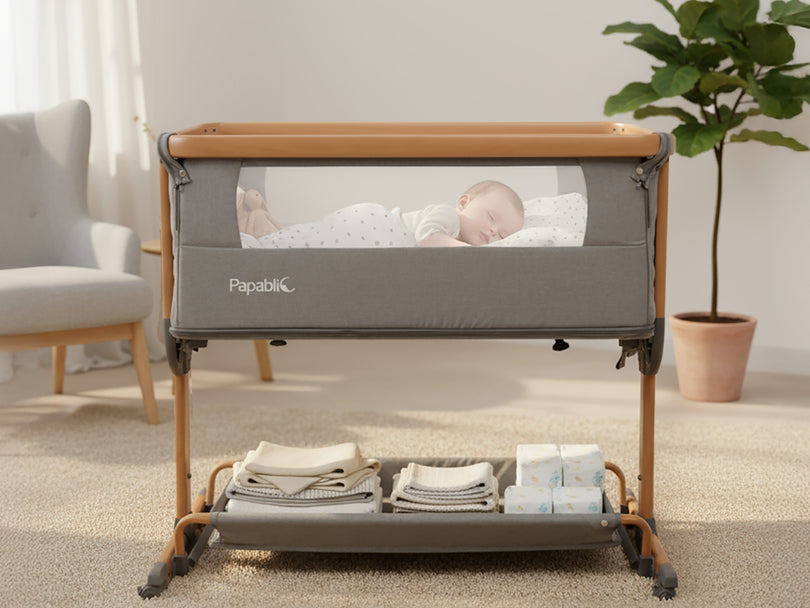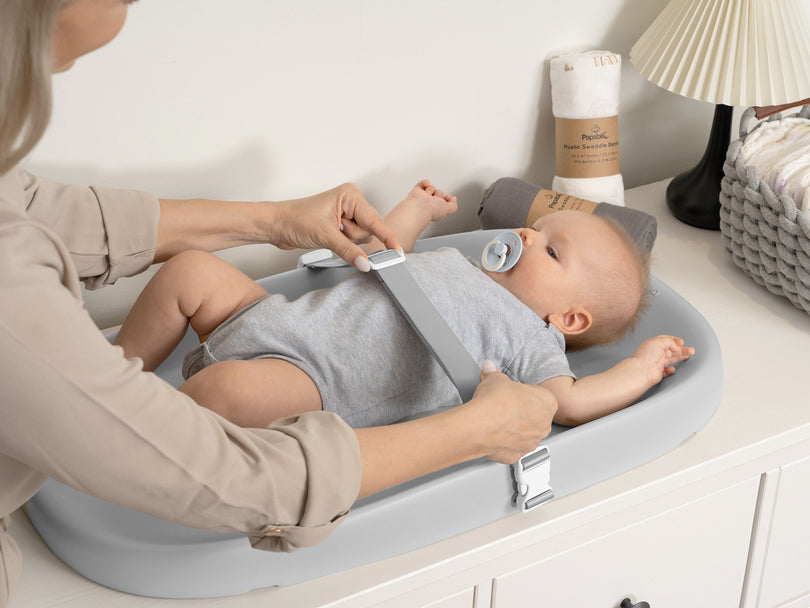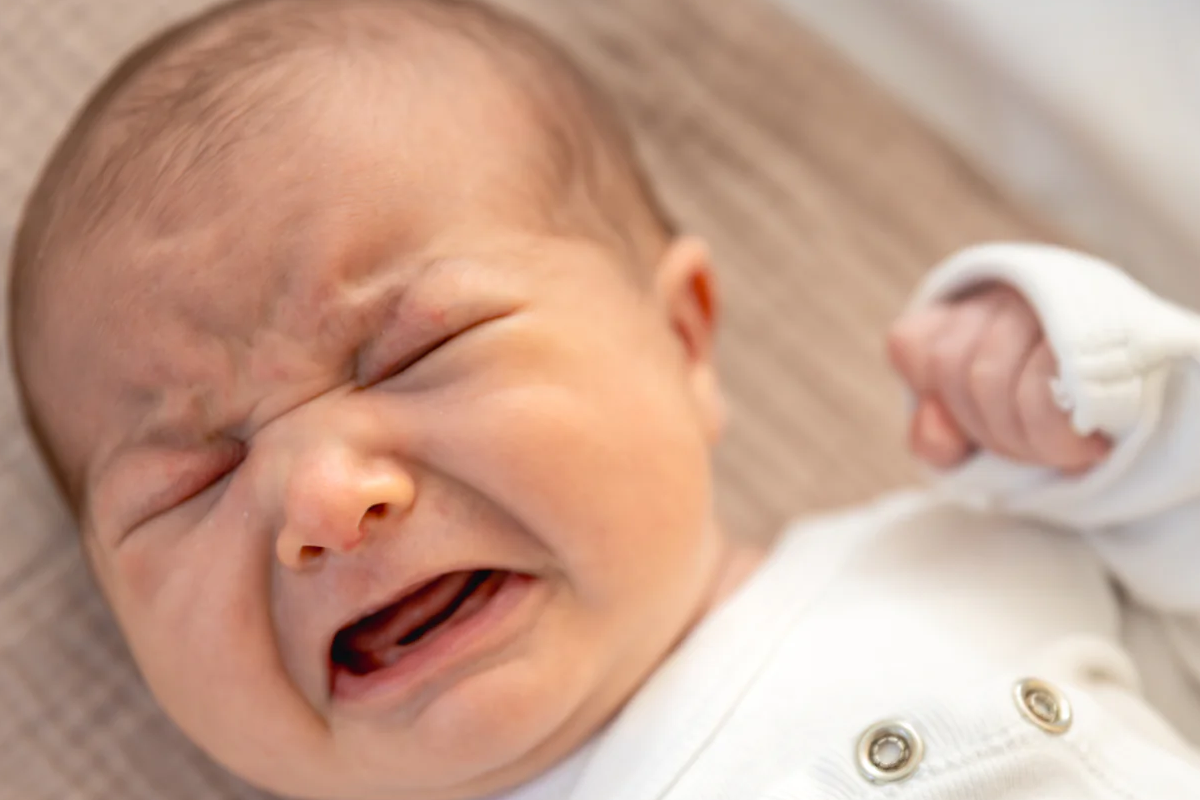
When it comes to ensuring your baby's health and safety, one of the top priorities is maintaining cleanliness and hygiene, especially when it comes to baby bottles. Sterilizing baby bottles is a crucial step in preventing harmful bacteria from affecting your little one's health.
As a parent, you probably use many traditional methods to sterilize baby products. Such as boiling hot water or using a microwave steam bag. But these methods are time-consuming and potentially unsafe. Using boiling water can take a long time because you need to boil the water and then hold the bottle under the water to clean all surfaces. But at this time, the buoyancy of the bottle will cause it to float on the water, which is not conducive to cleaning work. Microwave steam bags have a limited capacity and can easily burn your hands when taking out bottles, so neither of these two sterilization methods is a good choice.
After checking various information online, you will find that there are two disinfection methods to choose from: steam sterilizer and UV sterilizer. But what is the difference between the two methods? The following guide will eliminate your hesitation.
The Importance of Baby Bottle Sterilization
Before delving into the steam vs. UV sterilizer debate, let's address the fundamental question: Are baby bottles necessary? The answer is a resounding yes. Baby bottles are an essential accessory for feeding infants and young children. Whether you are breastfeeding or using formula, bottles play a vital role in your baby's nutrition.
However, even with proper cleaning, baby bottles can become breeding grounds for harmful bacteria if not sterilized regularly. These bacteria can lead to infections and other health issues in infants, whose immune systems are still developing. Therefore, sterilizing baby bottles is crucial to maintaining a safe and sanitary feeding environment.

How Often Should Baby Bottles Be Sterilized?
The frequency of sterilization largely depends on your baby's age and overall health. Here are some general guidelines:
Newborns (0-3 months): It's advisable to sterilize bottles before each use during the first three months when your baby's immune system is most vulnerable.
Infants (3-12 months): As your baby's immune system becomes stronger, you can reduce the frequency of sterilization to once a day or as needed. Some parents may continue daily sterilization for peace of mind, while others may choose to sterilize less often.
Toddlers (12+ months): As your child grows, the need for sterilization decreases. You can transition to thorough cleaning and regular dishwashing, but occasional sterilization is still recommended, especially during illness or when introducing new bottles.
Now that we've established the importance of sterilizing baby bottles and discussed the frequency, let's dive into the comparison between steam sterilizers and UV sterilizers to help you decide which option is best for you.
Steam Bottle Sterilizer
Sterilization Time:One of the primary advantages of steam sterilizers is their efficiency. They can sterilize baby bottles and accessories within minutes. Typically, it takes around 6-15 minutes to complete the sterilization process, depending on the specific model and brand.
Disinfection Effect:Steam sterilizers are highly effective at killing harmful bacteria, viruses, and other microorganisms that can be present on baby bottles. The high temperature of the steam ensures a thorough disinfection, making it a reliable choice for maintaining a germ-free environment for your baby.
Ease of Use:These sterilizers are user-friendly and convenient. Most models feature simple controls and automatic shut-off functions, ensuring safety and ease of operation. You can simply add water to the sterilizer, place the bottles and accessories inside, and press a button to start the process.
Impact on Baby's Health:Steam sterilizers are generally safe for baby bottles and accessories. However, there are some considerations to keep in mind:
🌟 Heat Resistance: Baby bottles and accessories must be heat-resistant to withstand the high temperatures generated by steam sterilization. Always check the manufacturer's recommendations to ensure compatibility.
🌟 Plastic Bottle Concerns: Some parents worry about the potential release of chemicals from plastic bottles when exposed to high temperatures. Using BPA-free bottles can alleviate these concerns.
🌟 Mineral Buildup: Over time, mineral deposits can accumulate in the sterilizer's heating element or water reservoir. Regular cleaning and maintenance are necessary to prevent this.
UV Bottle Sterilizer
Sterilization Time:UV sterilizers usually take longer to complete the sterilization process compared to steam sterilizers. On average, it can take between 10 to 30 minutes or more, depending on the model. This longer duration is due to the time required for the UV-C light to eliminate microorganisms.
Disinfection Effect:UV sterilizers use ultraviolet light to kill bacteria and viruses. This method is effective at eliminating harmful microorganisms, and it does not rely on heat, making it a suitable choice for heat-sensitive materials like some baby bottle accessories.
Ease of Use:UV sterilizers are straightforward to operate. You place the items to be sterilized inside the sterilizer, close the lid, and activate the UV-C light. Some models may have additional features such as automatic shut-off or drying functions.
Impact on Baby's Health:
UV sterilizers are generally considered safe for baby bottles and accessories. However, there are a few points to consider:
🌟Bottle Material: UV sterilization is suitable for a wide range of bottle materials, including plastic, glass, and silicone. This versatility can be an advantage if you use various types of bottles.
🌟UV-C Light Exposure: UV-C light can be harmful to the eyes and skin, so it's important to ensure that the sterilizer has safety features to prevent accidental exposure. Always follow the manufacturer's instructions for safe use.
🌟Maintenance: UV-C bulbs may need replacement over time, which adds to the long-term cost of owning a UV sterilizer.
Conclusion: Choosing the Right Sterilizer for Your Needs
In the debate between steam sterilizers and UV sterilizers for baby bottles, the choice ultimately comes down to your specific needs and preferences. Here's a recap of key considerations to help you make an informed decision:
- Steam Sterilizers are known for their speed, effectiveness, and ease of use. They are an excellent choice if you prioritize quick sterilization and are confident in the heat resistance of your baby bottles and accessories.
- UV Sterilizers offer versatility, making them suitable for various bottle materials. They provide effective disinfection without the use of heat, which is beneficial for heat-sensitive items. However, they typically have slightly longer sterilization times.
When it comes to specific product recommendations, both the Papablic Steam Sterilizer and Papablic UV Sterilizer have garnered positive reviews from parents and caregivers. These products offer reliable performance and ease of use, making them worth considering for your baby bottle sterilization needs.
Ultimately, the choice between a steam sterilizer and a UV sterilizer depends on your priorities and the types of bottles and accessories you use. Whichever option you select, regular sterilization and maintenance are essential to provide a safe and clean feeding environment for your baby. Prioritize your baby's health and well-being, and you'll make the right choice for your family's needs.

